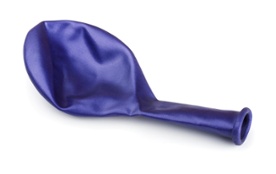Breast Implant Deflation
Breast implants are well designed and carefully manufactured, and when placed correctly in the right location, can lead to satisfying results that last many years. In fact, they can last a lifetime. As with all things synthetic, though, they can fail or break down. Consider any fluid filled container isnt it possible that it can begin to leak over time?
location, can lead to satisfying results that last many years. In fact, they can last a lifetime. As with all things synthetic, though, they can fail or break down. Consider any fluid filled container isnt it possible that it can begin to leak over time?
Leaking breast implants can be a distressing reality for a patient. Lets focus on saline implants for the moment. When a saline implant deflates (or leaks), the outcome can become apparent pretty quickly. Everything can be going along just fine, and all of a sudden, you notice that one breast is smaller, or asymmetric. As you can imagine, this never seems to happen at a convenient time.
At GLOW, we get a number of new patients who want to discuss options after a recent implant leak. Interestingly, while the exact moment the leak occurred can often be pinpointed, in some cases the patient just doesnt know what happened. Ive had patients mention certain activities, motions, or exercises, followed by a unique pulling or fluid sensation. Other patients simply note that they noticed a gradual change that became more obvious over time.
The speed with which the implant deflates (ie. loss of some or all of the saline originally placed inside) depends on the size and number of holes and the location(s) of the same. The larger and greater the number of holes, the faster the deflation. Some implant failures may drain the saline within minutes, leading to a fairly rapid change in the appearance of the breast. Smaller and more insidious leaks may take days or weeks to declare themselves.
What causes implants to leak? Early leaks (very close to the time of original placement) may be related to the surgical procedure perhaps the implant was compromised during the operation. Careful handling of the implant can reduce the chances of this happening, and if it is damaged, it should be noted and replaced during the original operation. Leaks that occur months or years after surgery may be related to some sort of trauma a blow to the chest or breast area, or excessive compression during mammography, or the constrictive force of a capsular contracture. In some cases, there may have been a manufacturing defect that somehow went unnoticed during the quality control process. Subtle weaknesses in the wall of an implant may lead to a rupture later on.
On a positive note, there is no harm from having a ruptured saline implant remain in place. The internal fluid will completely or partially drain from the implant and will slowly get reabsorbed into the surrounding tissues, and the implant itself could stay in place indefinitely. Most patients, though, do not like the asymmetry that results after a breast implant leaks.
If you notice that a saline implant has leaked, and you wish to continue to have breast implants, the sooner you resolve the issue, the better. Waiting for a month or longer may lead to tissue changes that can make additional surgery more difficult. If you want to keep the same size and shape implant, and no additional breast shaping or surgery is required, then removing the failed implant and replacing it with a new one is fairly simple. Weve found that most patients prefer to replace both implants at the same time (including the one that is still perfectly fine), particularly if they have been in place for a long time. Changing just the damaged implant is also fine, and this is often the only option covered under breast implant warranties anyway.
The longer implants have been in place, the more likely it is that additional breast shaping surgery may be indicated at the time of implant exchange. This can involve modifications to the implant pocket, or the position of the breast tissue and nipple area. This is always considered on a case-by-case basis, and the mere fact that a saline implant has leaked does not mean that anything more than a simple replacement (if desired), is indicated.
At GLOW, were glad weve been able to help a number of women deal with the distress of a ruptured saline implant. If you would like to learn more about how we may be able to help you, please contact us at any time.

